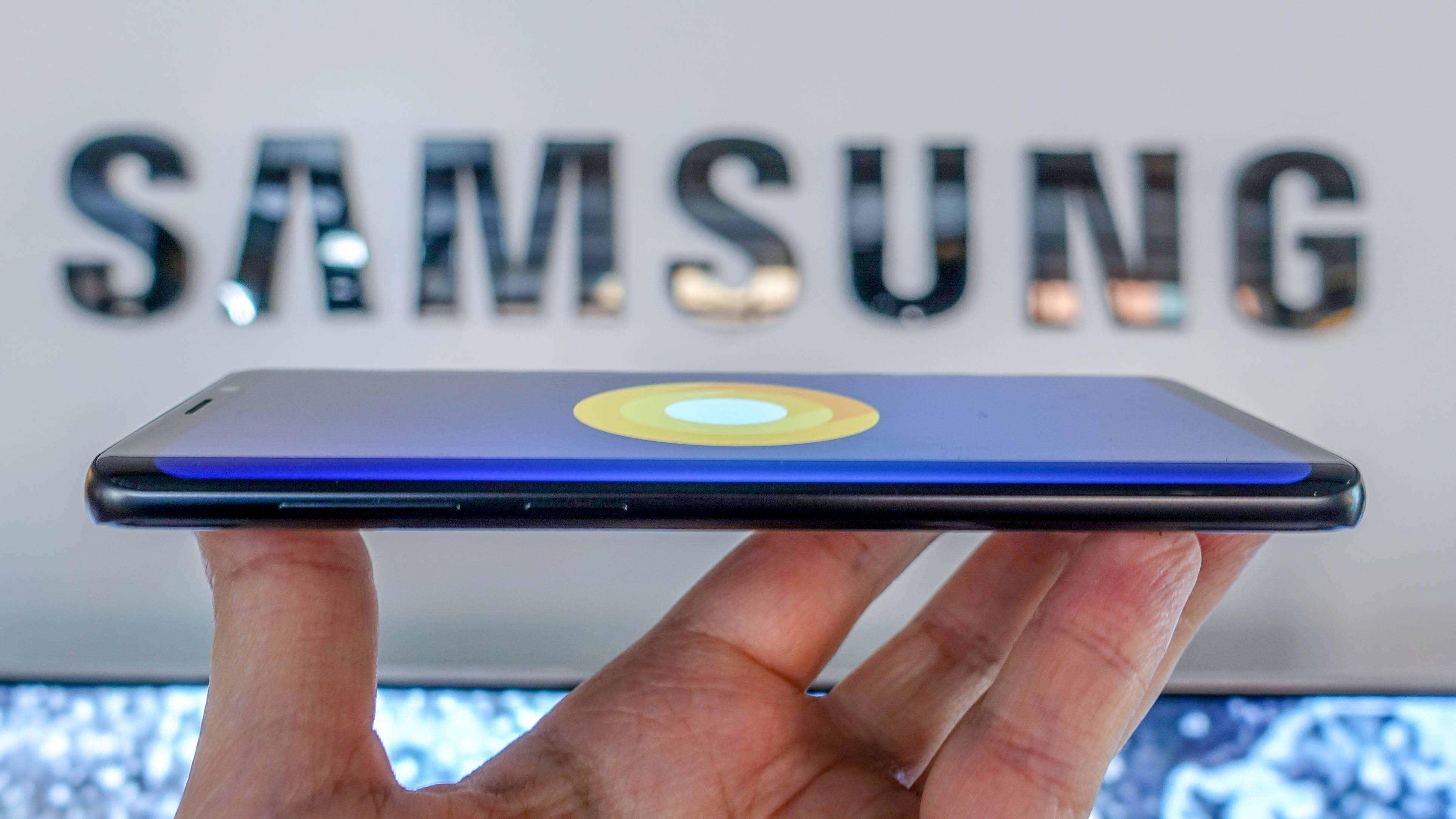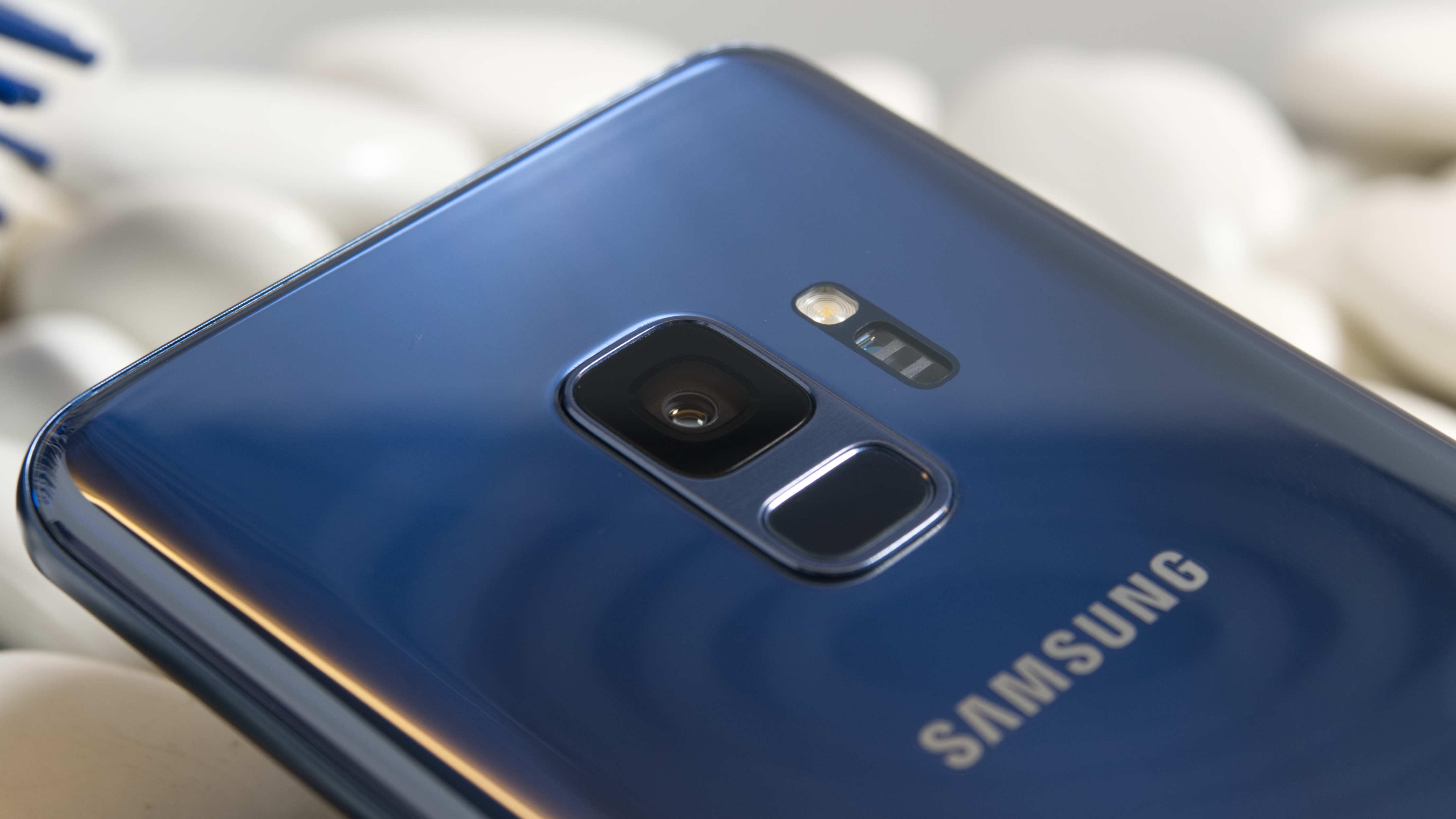Samsung Galaxy S9 vs Samsung Galaxy S9 Plus

You've heard about the two new Samsung phones, and you're wondering whether you should be plumping for the Galaxy S9 or heading northwards, into the heady territory of the Samsung Galaxy S9 Plus.
It's a tough one, as the larger model is around 20% more expensive in most territories it's being sold in... so is there enough there to justify the increase in price, or would you be better just sticking with the smaller model?
Thankfully for you we've been hands on with both, pored over the spec sheet and had a jolly good think about what each phone represents - so here's what you need to know.
- Read our hands on reviews: Samsung Galaxy S9 | Samsung Galaxy S9 Plus
Design

OK, there's not a lot different between these two phones stylistically, as the same design language has (predictably) been followed between the two.
Both of these handsets off IP68 certification for dust and water resistance, meaning you can plunge them into water for one and a half meters and hold them there for 30 minutes before wondering what you're doing with your life.
Both have the same rolling glass design at the sides of the phones, and both have the moved fingerprint scanner on the back, below the camera rather than alongside it. However, here's where we hit the first big change: the Galaxy S9 Plus has two cameras, rather than one, so has a larger camera module on the back.
In terms of dimensions, the Galaxy S9 is 147.7mm x 68.7mm x 8.5mm and weighs in at 163g, where the Galaxy S9 Plus is 158.1mm x 73.8mm x 8.5mm and 189g. As you can see, the S9 plus is both longer and wider, as you'd expect, but not by a huge amount.
Sign up for breaking news, reviews, opinion, top tech deals, and more.
Both phones will come in the same three colors: Midnight Black, Coral Blue and Lilac Purple, with other variations for different regions.

Display
Both phones technically have the same display, a Quad HD+ Infinity Display, using Samsung's Super AMOLED technology.
However, the Galaxy S9 Plus is offering a 6.2-inch display, where the Galaxy S8 only comes with a 5.8-inch option. You won't notice very much difference at all in the way they look, as the OLED technology helps mask any loss in sharpness... it really depends which you like holding in your hand more.

OS, power and specs
Both of these phones have identical power units running things: a Qualcomm Snapdragon 845 chipset in the US that can run at up to 2.8GHz, and an Exynos 9810 octa-core option with four cores running at 2.7GHz and four at 1.7GHz in the variant for the rest of the world.
However, there are slight differences here, as the Galaxy S9 Plus has 6GB of RAM, where the S9 'standard' comes with only 4GB. And if you want to pour more media into the mix, you're getting 64GB on the S9 and a much better 128GB on the S9 Plus.
You can chuck up to 400GB more on both phones through the microSD slot at the top of the phones though, so the expansion options means there's little to worry about here.
And in terms of the Android operating system, given these are pretty similar phones you're getting Android 8 Oreo on both. So that's something nice that you can tell your mother, right?

Camera and battery

Now we're onto a couple of the key differences between the two phones, and arguably the reason you'd pick the handset up.
Let's start with the camera - and it's pretty powerful on both of these phones. The new feature on the Galaxy S9 duo is the fact that the dual aperture feature offers the best of both worlds, with f/1.5 for those incredible low-light moments, but a f/2.4 option for when you want to be capturing the perfect scenario when the lighting levels are just fine.
However, where the Samsung Galaxy S9 Plus comes into its own is when you want to get a bit closer - without having to move. While it's got the wide-angle dual aperture lens, just like the S9, it also has a telephoto option that's constantly zoomed a little further into the action.
This means, just like on the Samsung Galaxy Note 8, the phone is capable of taking a wider variety of shots, and you can still see what the wider option looks like after, if you so wish.

There’s also little to choose in their front-facing cameras, with both sporting 8MP f/1.7 lenses.
In terms of the battery power, you're getting a significant upgrade on the Galaxy S9 Plus thanks to the 3500mAh power pack in there, compared to the 3000mAh option in the Galaxy S9.
That equates to the difference between probably getting all-day battery life out of the S9, and almost definitely on the S9 Plus.
That said, we'd like to really test the credentials of the latter as we've found with the Samsung Galaxy Note 8, the battery life really isn't superb - so perhaps Samsung has tuned that issue out.
Takeaway

So, that's all the key differences between the two phones, and it depends on what you want out of your phone.
Well, actually it depends on whether you can afford the Samsung Galaxy S9 Plus in the first place, as it's the second most expensive phone on the market after the iPhone X, which isn't the most pleasant place to be.
But if you're OK with that, then you'll need to consider a few things: do you mind the extra height and width? Would you really use the extra battery life, or would the added screen real estate annoy you too much when reaching your thumbs across?
With the cameras: are you going to get the most out of the telephoto lens, or will you be OK with the dual aperture sensor on the Galaxy S9 alone?
Going for the higher-spec model always seems like the good idea, and with 6GB of RAM inside, you might enjoy that if you really like taxing your phone, but the lower-priced (but certainly not low price) handset isn't bad at all.
- The Samsung Galaxy Note 9 is due later this year
MWC (Mobile World Congress) is the world's largest exhibition for the mobile industry, stuffed full of the newest phones, tablets, wearables and more. TechRadar is reporting live from Barcelona all week to bring you the very latest from the show floor. Head to our dedicated MWC 2018 hub to see all the new releases, along with TechRadar's world-class analysis and buying advice about your next phone.

Gareth has been part of the consumer technology world in a career spanning three decades. He started life as a staff writer on the fledgling TechRadar, and has grew with the site (primarily as phones, tablets and wearables editor) until becoming Global Editor in Chief in 2018. Gareth has written over 4,000 articles for TechRadar, has contributed expert insight to a number of other publications, chaired panels on zeitgeist technologies, presented at the Gadget Show Live as well as representing the brand on TV and radio for multiple channels including Sky, BBC, ITV and Al-Jazeera. Passionate about fitness, he can bore anyone rigid about stress management, sleep tracking, heart rate variance as well as bemoaning something about the latest iPhone, Galaxy or OLED TV.